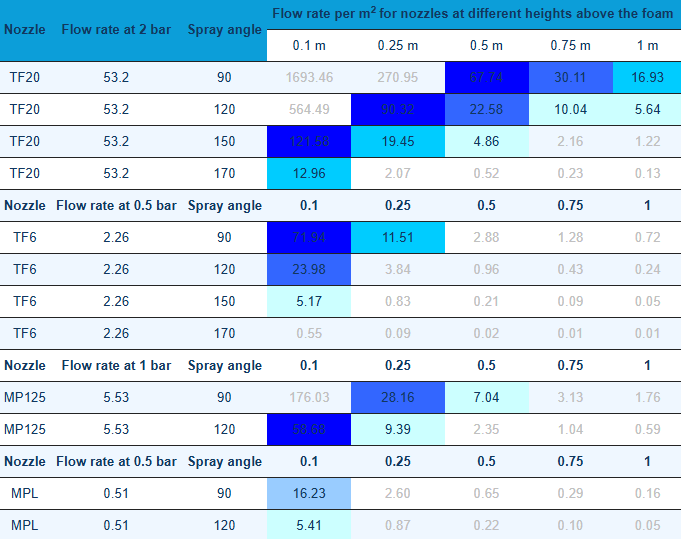Foam control nozzles - achieving the correct flow rate
Sprays used to control foam build-up need to be carefully dosed. Too much spray being delivered can have an adverse effect as it may actually agitate the fluid below causing more foam to be created. Of course too little foam control spray will mean a failure to prevent foam build up.
The amount of fluid delivered per square meter will vary considerably depending on the rate at which foam is being created and the consistency of the foam. Very fine light foams required less fluid to counter them where as thick foams require more.
In general the very lightest foams will require about 4 litres of spray per square metre per minute for effective foam control and this rises to around 160 litres per minute per square metre for very aggressive foam forming situations. It should be noted that the upper limit of this range would be for an exceptionally fast forming foam.
So we can say that :
Very light foams require 4-10 litres per minute per m2
Light foams require 11-20 litres per minute per m2
Medium foams require 21-50 litres per minute per m2
Heavy foams require 50+ litres per minute per m2
The effects of spray angle and nozzle height
The nozzle size selected will determine its absolute flow rate but, as illustrated below, the spray angle and distance from foam will affect the area that the fluid is delivered to. In many cases angle and distance from target will be as big an influence as nozzle selection and overall nozzle size.
The spray angle of a nozzle and its height above the foam will determine the area over which it distributes its fluid.
The area covered by a nozzle can be determined by the following formula:
Area covered = Pi(hTan(Ø/2))2
Where h is the height above the foam and Ø is the spray angle of the nozzle.
So the flow rate per m2 per minute can be determined as:
Flow rate/Pi(hTan(Ø/2))2
Flow rate for individual nozzles can be seen by looking at relevant data sheets but the table below shows some examples of how this calculation might be applied in nozzle selection.

From the table above we can see that a TF14 nozzle could, in principle, be used for light, medium or heavy foam control depending on the deployed spray angle and distance from the foam. Similar variations can be found in other nozzle types.